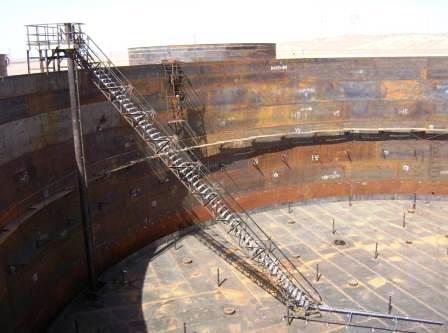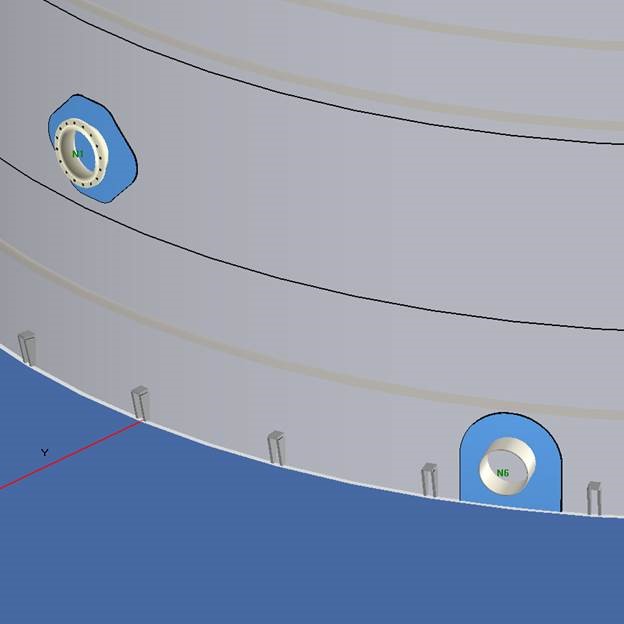A Step-by-Step Check Out the Setup Refine of Welding Evaluation Techniques
Welding inspection is an essential process that assures structural honesty and safety. The installment of evaluation strategies involves a number of systematic steps, each indispensable to accomplishing reliable results. From preparation and tool choice to performing visual and non-destructive examinations, each phase needs mindful attention. Recognizing these procedures can considerably enhance quality control in welding jobs. What obstacles arise in applying these techniques, and exactly how can they be properly dealt with?
Comprehending the Value of Welding Inspection
Welding assessment is an essential part of guaranteeing architectural integrity and safety and security in building and construction and manufacturing procedures. This method involves reviewing bonded joints for issues, ensuring that they meet particular requirements and guidelines. By methodically determining weld top quality, assessors can identify issues such as cracks, voids, and incomplete fusion, which can compromise the strength and resilience of structures.
The importance of welding assessment prolongs beyond instant security issues; it helps avoid costly failures and potential hazards in the long-term. Reliable examination strategies foster conformity with market requirements, consequently improving the overall reliability of bonded parts. Furthermore, a robust inspection procedure adds to preserving the credibility of producers and contractors, as it ensures clients of the quality of their tasks. Inevitably, comprehending the importance of welding examination is vital for advertising safe construction techniques and making sure the durability of essential framework and products.
Selecting the Right Devices for Evaluation
When selecting the proper devices for assessment, it is important to ponder the certain needs of the welding process and the products included. Various examination methods, such as aesthetic, ultrasonic, and radiographic screening, require distinct tools customized to their one-of-a-kind demands. For visual assessments, devices like magnifying calipers and glasses are essential for assessing weld high quality. Ultrasonic screening calls for specialized equipment with the ability of sending and obtaining sound waves to spot interior problems. Radiographic screening, on the various other hand, makes use of X-ray or gamma-ray sources alongside sensitive film or digital detectors to expose variances.
Furthermore, individual safety tools (PPE) is vital to guarantee the safety of inspectors during evaluations. Selecting the right tools not only enhances the precision of inspections but also contributes to the overall integrity and safety and security of the welding task. Subsequently, a comprehensive understanding of available tools and their applications is vital for effective welding inspection.
Planning for the Inspection Process
Before starting the inspection procedure, it is important to develop an extensive plan that outlines the extent and goals of the assessment. This strategy must include specific standards that define what constitutes appropriate quality in the welding job being examined. Identifying the pertinent codes and standards is essential, as they will certainly guide the examination requirements and methodologies.
Furthermore, personnel entailed in the evaluation has to be effectively trained and accredited in welding inspection strategies to guarantee dependability and accuracy. A checklist can be beneficial in organizing the numerous aspects of the examination, ranging from devices preparedness to ecological conditions that might influence the assessment.

Logistical factors to consider such as organizing, readily available sources, and interaction between team members should be dealt with. By preparing systematically, examiners can improve the efficiency of the examination and make sure that all essential factors are properly considered before continuing with the evaluation itself.
Carrying Out Visual Assessments

Carrying out visual assessments is a crucial action in the welding assessment process, calling for cautious preparation to ensure effective assessment. Inspectors have to be familiar with key flaw indicators that can signify prospective concerns in weld high quality. By focusing on these elements, one can boost the general reliability of the assessment outcomes.
Getting Ready For Visual Inspection
Aesthetic inspection works as a critical very first action in the welding assessment procedure, guaranteeing that any type of potential problems are recognized early (API 650 Welding Inspection). Proper preparation is crucial for efficient aesthetic inspection. Examiners must start by evaluating appropriate documents, including welding procedures and specs, to recognize the project demands. They have to gather required tools, such as multiplying glasses, flashlights, and ideal personal protective devices (PPE) A thorough evaluation of the assessment location is crucial; inspectors ought to validate it is cost-free and clean of obstructions. Furthermore, it is essential to develop ideal lighting conditions to enhance exposure of welds. By taking these preparatory steps, examiners can develop an atmosphere for determining disparities and ensuring the stability of the bonded structures
Secret Flaw Indicators
A detailed understanding of key defect indicators is important during visual inspections to assure the top quality and safety and security of bonded joints. Examiners ought to focus on specific indicators such as cracks, porosity, damages, and incomplete fusion. Cracks might show up as sharp lines and can jeopardize structural integrity. Porosity shows up as little holes that can weaken weld toughness. Undercuts, which are grooves along the weld side, can result in tension concentration. Insufficient combination indicates that the weld steel did not appropriately bond with the base material, resulting in a weak joint. By methodically determining these defects, assessors can identify compliance with sector requirements and enhance the total dependability of welded frameworks, ultimately adding to much safer functional conditions.
Implementing Non-Destructive Examining Methods

Numerous non-destructive screening (NDT) techniques are important to guaranteeing the stability of welded structures without endangering their performance. These approaches allow assessors to assess weld top quality and spot defects without creating damage to the products being examined. Typical NDT strategies include ultrasonic testing, radiographic screening, magnetic particle testing, and color penetrant testing. Each technique offers a particular function, addressing different kinds of imperfections such as cracks, porosity, or incomplete combination.
Implementing NDT methods calls for a systematic method, starting with picking the appropriate technique based upon the products and the nature of the weld. Educating employees in these techniques is vital for exact outcomes. In addition, establishing clear procedures click here for more info and requirements assurances uniformity throughout the examination procedure. By incorporating NDT right into the welding inspection workflow, organizations can improve the dependability of their products while lessening prospective dangers related to architectural failings. This aggressive strategy inevitably adds to keeping safety and security and top quality criteria in bonded building and constructions.
Recording and Assessing Inspection Results
Effective documentation and analysis of inspection outcomes are crucial parts of the welding examination procedure. Precise records of evaluation findings work as a referral for high quality assurance and compliance with industry criteria. API 650 Welding Inspection. Assessors must use structured forms or electronic systems to log details such as the type of weld, examination approaches utilized, and any disparities determined during the assessment
Once information is gathered, extensive analysis is essential. This includes contrasting outcomes against developed requirements to recognize patterns or reoccuring problems. Statistical tools may be used to measure defects and assess their influence on total weld high quality.
In addition, efficient interaction of findings to pertinent stakeholders is essential. Summaries and records ought to be clear and succinct, highlighting key understandings and suggestions for corrective his comment is here activities. By systematically analyzing and documenting inspection outcomes, companies can promote continuous enhancement in welding practices and enhance item integrity.
Often Asked Inquiries
What Credentials Are Required to End Up Being a Welding Inspector?
To end up being a welding examiner, one typically requires relevant certifications such as AWS CWI, along with experience in welding techniques, knowledge of welding codes, and effectiveness in examination strategies to ensure quality and security criteria.
Exactly How Typically Should Welding Inspections Be Carried Out?
Welding assessments ought to be conducted regularly, generally after each weld is finished, and periodically during jobs. Aspects such as project complexity, market criteria, and regulatory requirements can affect the regularity of these evaluations.
What Is the Cost of Welding Inspection Services?
The expense of welding assessment solutions varies significantly based upon aspects such as job size, complexity, and location. Generally, rates range browse around these guys from $100 to $150 per hour, with extra fees for specialized screening and accreditations.
Are There Certifications for Welding Inspectors?
Yes, there are different accreditations for welding examiners, including those used by the American Welding Culture (AWS) and the International Institute of Welding (IIW) These accreditations assure inspectors possess the required abilities and understanding for efficient analyses.

Just how Do I Pick an Assessment Service Provider?
To select an evaluation service company, one ought to examine credentials, experience, market credibility, and client reviews. In addition, contrasting solution offerings and rates can aid guarantee the selected company satisfies particular project requires effectively.
In addition, workers included in the evaluation needs to be properly educated and certified in welding examination methods to ensure reliability and precision. Conducting visual assessments is a vital action in the welding evaluation procedure, calling for mindful prep work to assure effective evaluation. Aesthetic evaluation serves as a critical first step in the welding evaluation process, guaranteeing that any kind of prospective problems are determined early. Effective documents and analysis of evaluation outcomes are essential parts of the welding assessment process. Welding evaluations must be performed on a regular basis, typically after each weld is finished, and occasionally throughout jobs.